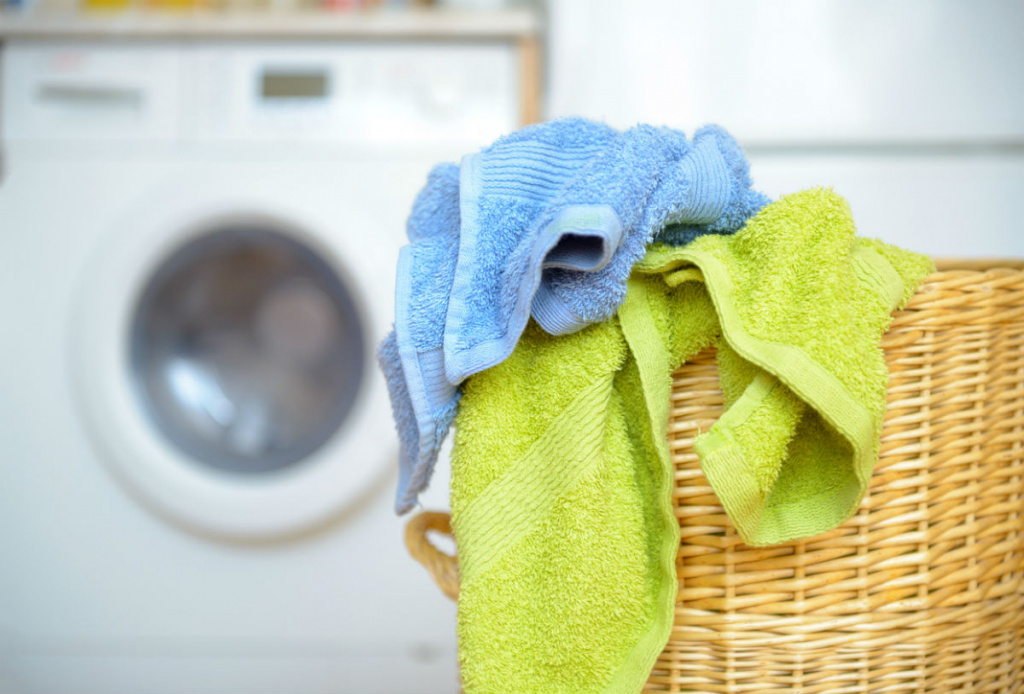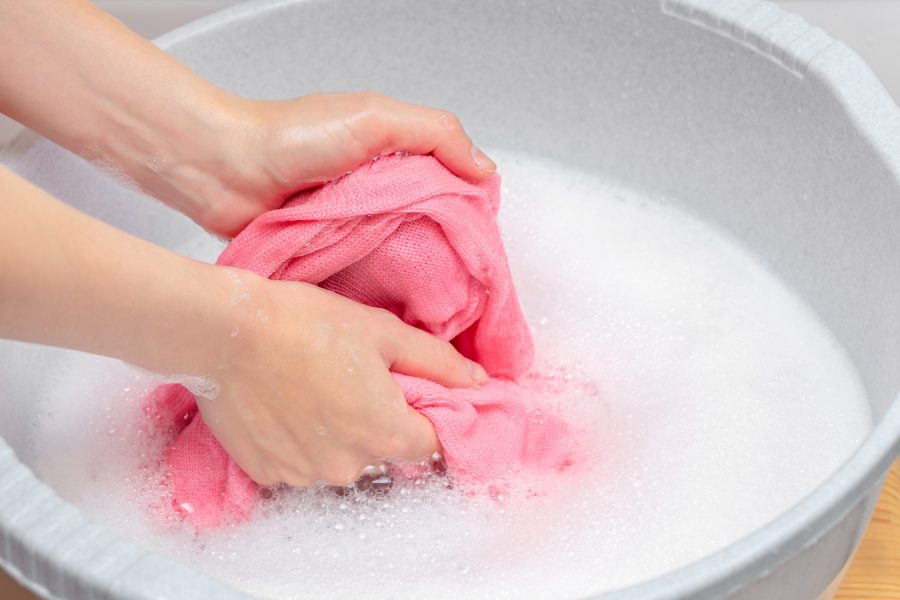Towels are widely used in everyday life, and quite intensively, which is why they need to be washed frequently. This can be done both manually and in a washing machine. But in order for such things to serve longer and at the same time not lose an attractive, neat appearance, they must be cleaned correctly. It is important to choose the appropriate temperature and program, depending on the material from which the product is made, to choose a detergent that will effectively clean and remove stains. From this material you will learn how to wash towels, whether they need to be pre-soaked and ironed after washing, you will find answers to other questions on the topic.

general information
One of the most common questions is how often should towels be washed? It can be said that processing is required as it gets dirty, but a clear answer cannot be given. But it is not so. Products that are used in the bathroom can remain clean on the outside for quite some time, but this does not mean that you can not change them for weeks. Indeed, in the fibers of the fabric, especially wet, microorganisms multiply, which can pose a threat to human health. Therefore, there are recommendations on how often to wash towels, regardless of whether they look dirty or not:
-
Towels that are used after taking a bath or shower are changed after three uses.
-
Products that wipe hands and face — daily or 1 time in 2 days.
-
Kitchenware is washed every day.
-
Children’s towels are recommended to be washed after each use, separately from products used by adult family members.
The washing sequence is as follows:
-
Sort things by purpose, type of fabric and color. Baths are washed separately from kitchen ones. White items are washed separately from colored ones. Products that have decor such as embroidery, ribbons, lace are recommended to be washed in a special bag.
-
If the fabric has stubborn stains or dirt that is unlikely to be washed off, it must first be soaked. You can use a stain remover.
-
Loading a batch of laundry into a washing machine or into a wash basin. It is necessary to fill the drum not “to the eyeballs”, but by about 80%. Then the quality of washing will be higher, and the products will rinse well at the end. In addition, it is important for towels to absorb as much liquid as possible, and a full drum load will not allow this.
-
Adding detergent, selecting temperature, washing, rinsing, spinning. When washing baby towels, it is better to turn on the extra rinse program.
It would seem that there is nothing complicated in washing towels. But what exactly should be the temperature of the water, what kind of detergent to use — powder or gel, how many turns to set for spinning? Let’s try to figure it out.
Washing in automatic type machines: mode and temperature, spin speed
Optimal parameters for washing bath towels:
-
The temperature depends on the type of fabric. If it is bamboo — 30 degrees; cotton, linen — up to 60 degrees; velor or microfiber — 40 degrees.
-
The best cleaning agent is liquid, for delicate fabrics. You can use rinse aid, conditioner.
-
Washing mode — delicate, manual, “wool”.
-
Spin speed — 400–600 rpm or no spin at all.
You can wash kitchen towels in the following conditions:
-
Colored items at a temperature of 30–40 degrees, white — up to 60. Kitchen waffle utensils can be washed at a temperature of 90 degrees.
-
The detergent is liquid, but regular powder can also be used. However, keep in mind that the powder thins the fabric, and also contributes to the adhesion of the villi.
-
Mode — quick or daily wash.
-
Spin speed — 800‑1000 rpm.
When choosing a laundry detergent, remember that it is better to wash children’s and bath products with a hypoallergenic gel, with a predominantly natural composition. Baking soda can be added to the powder compartment to keep the towels soft after drying.
How to wash by hand

It is better not to wash large bath towels by hand, because when wet they become very heavy, it will be very difficult to process and wring them out with high quality. But small kitchen or children’s products can be washed in a basin, thus saving water, electricity and washing machine resources. The process consists of the following steps:
-
Pour warm or hot, but not scalding water into the container. The amount of liquid should be enough to completely cover things.
-
Pour detergent, as well as 200 ml. vinegar for every 10 liters of water (for softening).
-
Immerse the products in water, wash, leave for 40 minutes, wash again.
-
We squeeze, rinse, changing the water several times until it becomes completely transparent. You can add a few drops of your favorite essential oil to the water to give your towels a light fragrance. You can also rinse under running water, for example, under a tap, so the detergent under the pressure of water will be better washed out.
-
Finally wring out, shake to straighten the products, hang to dry. It is better to dry things outdoors or in a room with good ventilation.
Kitchen and children’s towels made of cotton, linen fabric are recommended to be ironed after drying. In this way, you not only keep your products looking neat, but also disinfect them by eliminating potentially dangerous microorganisms.
We use non-standard methods and folk remedies
Experienced housewives often use unusual ways to keep the house clean. Washing kitchen towels is no exception, and there are some special but effective ways to make them perfectly clean and soft.
Washing methods:
-
We take products that need cleaning, pour a hot (90–100 degrees) solution of water, 100 grams of soda, detergent, 50 ml. odorless vegetable oil and 50 ml. bleach. When the liquid has cooled to room temperature, wash things with your hands, then rinse thoroughly.
-
We take several small towels, a glass container in which they are placed when wet. Wet the products with water and carefully lather with laundry soap. We put it in the microwave for 1.5 minutes, turn it on at a power of 450–500 kW. After that, we erase in the usual way.
-
Soak things in warm water with vinegar (1–2 cups per 5 liters of water) for 2 hours. We load them into the washing machine, also pour vinegar into the air conditioner compartment, start washing in standard mode. Vinegar will disinfect products, make them soft, and eliminate unpleasant odors.
-
We take a large pot that is suitable for boiling laundry, pour water, add washing powder or grated laundry soap, soda ash or ordinary soda, a few tablespoons of hydrogen peroxide (if you need a whitening effect). Immerse the products in water, bring to a boil, carefully remove them, rinse in cool water. After boiling, it is better to dry things in the open air.
-
We apply gruel from mustard powder diluted with water to wet things. We place the products in a plastic bag so that the mustard does not dry out, leave it overnight. After that, wash and rinse as usual.
Before using one method or another, make sure that the product is made of a material of a type that will withstand such processing. Aggressive methods of exposure, such as treatment with hot water, are best not applied to colored fabrics, otherwise they may shed.
Answers to frequently asked questions
There are several questions regarding laundry, the answers to which are often sought even by experienced housewives, experts tried to give detailed answers to them:
-
Why do towels get hard over time? There are several main causes of such a problem, for example, washing in water of increased hardness. Also, the use of low-quality powder, washing at a very high temperature, bleaching with chlorine products, poor rinsing of things, spinning at high speeds, and frequent ironing can also lead to this result.
-
How to soften fabric? You can reduce the hardness of the water by adding vinegar to it, use the quick wash cycle, wring out things at a speed of 400 revolutions, use a double or triple rinse. And also choose an eco-friendly laundry detergent that does not contain chlorine, phosphates. It is desirable that it be liquid, since the powder dissolves very poorly and is rinsed out. You can soften terry towels if you put special balls in the drum of the washing machine.
-
Is it possible to get rid of the unpleasant smell from towels? If the products have been used for a long time or they are constantly damp, lying in the dirty laundry basket for a long time, they can really start to emit an unpleasant smell. If normal washing does not help to get rid of it, try boiling them with laundry soap, then rinse them in water with essential oil. Or soak for 8–10 hours in water with the addition of soda and vinegar, then wash as usual. If this does not help, you can use a special washing liquid that effectively removes unpleasant odors, for example, OXICLEAN Freshness.
-
Does bleaching harm fabrics? Bleaching does not harm the fibers if a bleach-free product is used. The desired effect can be achieved if you use a solution made from 5 liters of water, 1 tablespoon of ammonia and 25 ml. hydrogen peroxide. Products must be soaked in the solution for 30 minutes, and then washed. Or you can soak things in ice water to which salt is added (2 tablespoons per 1 liter of water). You can also buy industrial-grade chlorine-free bleach.
And the last question on which opinions differ: do you need to iron towels? Our experts believe that products that are used to wipe the body, hands, face, do not need to be ironed. Otherwise, they become rigid, lose their hygroscopicity, that is, they absorb water worse. To make the product look neat, not wrinkled, it is enough to shake it after washing, straighten it with your hands on a rope or dryer bar. But the towels used in the kitchen can be ironed, since additional disinfection will not hurt them, besides, the hostesses try not to expose crumpled things for general viewing.

Добавить комментарий
Для отправки комментария вам необходимо авторизоваться.